
Rajiv
-
Posts
36 -
Joined
-
Last visited
Posts posted by Rajiv
-
-
When we install any application, for example an antivirus software - like McAfee on a server...we need admin rights on the server. I can logon using my domain admin credentials and install that application. That software usually does NOT run using my domain admin credentials.
How is SCCM 2012 any different?
I guess I need to understand what the SMSAdmin user is really for.
Is it a service account [meaning SCCM will be running under that account]?
Even if that is true...why the need to logon using SMSAdmin to do the install. Just do the install using any user who has enough rights and then change the services to run under SMSAdmin.
.......or I am totally missing something?
using a domain admin account for the SMSAdmin user would be a huge security risk and is definetly not best practice, create the SMSadmin user using any username you wish (SMSadmin is easy to remember..) and the user should just be a regular domain user, adding them as local administrator on the configuration manager server(s) is sufficient for our needs.
the other accounts listed as used to get the job done, test users are for testing things, domjoin for joining the domain during OSD
-
I have a question about step # 1. Why create all these accounts?
More specifically... I don't understand what is the need for this account - SMSadmin. Why not use a domain admin account for all these installs?
-
Is there a way to recover an accidently deleted packages folder?
I was in configmgr console and accidently deleted a folder under packages which contained many software packages!
I know this sucks....but I was hoping there was a way to recover that folder.
I dont have backups enabled in the site management [even worse, I know, I know]
The packages are still there in SMSPKGD$. The advertisements are still pointing to [non existent] packages.
HELP!
-
well, I just wanna report that this method does not work for all machines.
For one particular machine, no matter what I do.....abortpxe still happens.
I wonder what else can I do about it.
-
I imported the XML and I am surprised how many steps it has!
See this screenshot:
I am a newbie to SCCM and my [working OSD] TS is only this long:
Would it be possible to describe a simple USMT procedure?
All I want is to capture user state from one [existing] XP machine and restore that userstate to the Win 7 machine being deployed via SCCM-OSD.
-
What do we use for USMT from XP/Vista to Windows 7?
USMT does not support Windows 7
-
it worked for me too !
BUT, my problem was slightly different.
After creating a computer association a particular PC was refusing to appear in the OS deployment collection. I added it over and over again, all in vain!
I did your procedure but put % as the value of the atribute - resource name. Then the wizard found the troublesome PC! I checked it's box and viola! it appeared in the OSD collection. The aportPXE went away too!
Thanks!
-
I find it easier to go to
SCCM console>>>OSD>>> [on homepage] click on advertisement link.
All info is there!
-
ok, so I found the answer to my question here:
on that page....go to :
Step 2: Create a bare metal client record:
-
Thanks for the very nice writeup.
I am trying to find out this:
In the Deploy Win 7 collection...how do I include a fresh [bare metal] PC which has no OS?
I guess a bare metal PC can be added using its MAC address. But when I try to add its MAC, SCCM's console does not detect it {I mean it does not appear in the search results} when I go into the collection >> properties.
So how is a bare-metal machine imaged using SCCM?
-
BTW, If you already installed Windows 2003 SP2, you do not need to install WDS.
It is already included in SP2
I heard it here:
http://technet.microsoft.com/en-us/library/cc766320(WS.10).aspx#BKMK_InstallingWDS
Then I checked my win2k3 server and yes it already had SP2.
You need to go to add-remove programs and then Add/remove windows components.
There you will see WDS, you need to install it!
-
It is working now!
Here is how I solved my issue:
and
http://iboyd.net/index.php/2009/01/09/troubleshooting-sccm-and-bits-downloads/
I tried this procedure but ran into some trouble.
The client is not upgraded. It still shows the old version - 6221.
ccmsetup.exe runs on the client machine. It runs for a long time....like 15 minutes and then disappears. I looked into all ...CCM\logs but could not find any reference. There is something in mtrmgr.log but nothing interesting.
What can I do to troubleshoot this?
-
[update: I solved my issue, added resolution into the other {instruction}thread.]
I tried this procedure but ran into some trouble.
The client is not upgraded. It still shows the old version - 6221.
ccmsetup.exe runs on the client machine. It runs for a long time....like 15 minutes and then disappears. I looked into all ...CCM\logs but could not find any reference. There is something in mtrmgr.log but nothing interesting.
What can I do to troubleshoot this?
-
I tried this procedure but ran into some trouble.
The client is not upgraded. It still shows the old version - 6221.
ccmsetup.exe runs on the client machine. It runs for a long time....like 15 minutes and then disappears. I looked into all ...CCM\logs but could not find any reference. There is something in mtrmgr.log but nothing interesting.
What can I do to troubleshoot this?
-
oh great!
Thanks for the quick reply. I will try it out and report back.
Thanks ! Your site and articles are a lifesaver!
-
ummm....maybe not.
How do you do that?
While installing SP2 is there an option to select?
did you update your sccm configmgr client to the sp2 version ?
-
I am also having a similar problem. SCCM is working properly for a few weeks. All clients were XP.
Now I added a few Windows 7 machines to the domain. No matter how long I wait, the SCCM client does not get installed on the Win 7 machines. Win 7 machines are also the part of the domain. SCCM also sees them.........I mean they are visible in the collections. They are visible in both [Application deployment >> Standard Apps] and All systems.
Is there a setting I need to enable for client push to Win 7??
SCCM has SP2 and R2. So that is not missing. I do see Win 7 as an option when I create software packages.
-
ummm...kinda'!!

Actually, I'd like to use SCCM's Software Update functionality along with WSUS.
Why?
Well, for example:
The IT manager does not want IE8 deployed onto all desktops. he wants to exclude a few workstations. Due to this, until now, we have not been able to install IE8 automatically using WSUS.
With SCCM here, we have now this capability. I wanted to use Software Update Point from SCCM to do this.
The problem:
This means I will have to integrate WSUS with SCCM. And poof ! there goes my Automatic approvals of critical updates!
Is it too much to ask for this:
1. Use WSUS for installing "general updates" via WSUS' Automatic approvals
2. Use SCCM for installing specific updates to specific computers.
So you want to keep using WSUS for the updates and not use a Software Update Point from SCCM. Well... just not integrate WSUS with SCCM, so don't configure a Software Update Point in SCCM. This way you can just manage your updates through WSUS.
-
The question was in my second post in this thread...and it was directed to the poster "jamitupya" who mentioned he has SCCM AND WSUS working simultaneously in the same environment. Hence, I wanted to know what his particular settings are...........not what the recommended settings are [from microsoft]
Then what is your question? Because before you said this:
The answer will still be, that if you want WSUS integrated with SCCM to function properly you should NOT configure a GPO...
I think this can help, there is a Technet article about deploying Forefront Updates with a shared WSUS environment here: http://technet.microsoft.com/en-us/library/dd185652.aspx
And I have to say that it works, because I use it myself. And NO there is not a seperate GPO needed.
Thanks for your tip. I will look into that URL.
As for getting WSUS integrated with SCCM ...I know how to do that........but I do not want to do it!
I just don't like how SCCM totally takes control from WSUS. It should have been configurable. I wish there was a way to automatically approve the gazillion updates M$ releases. It is simply overwhelming for my one man IT shop :-)
In short:
Since [apparantly] M$ takes away the "WSUS style Automatic approvals" the moment we integrate WSUS with SCCM........
I want to find out how to keep WSUS working as usual and have SCCM in the same environment.
I hope I am making myself clearer.
-
I know that.
But that is not the question here.
When using WSUS integrated with SCCM, you shouldn't set any GPO for that all. SCCM will set a local policy for that.
-
I have been doing some research on this.
I heard some people are having two WSUS in their environment....one for just software updates [Automatic approvals ] the other gets integrated with SCCM for pushing out software updates via SCCM.
But I am still trying to understand how can we have two WSUS OR SCCM + SSUS in the same environment.
How do you set the GPO in AD?
Do you point your clients to WSUS server or set that to nothing for SCCM?
you can continue to use just WSUS in your environment sure, just don't intergrate it and it will continue to work, if you just maintain the wsus server and setup the individual clients to collect wsus updates should all still work.
One of our environments:
SCCM: OSD, Software Distribution, reporting, Asset Intelligence
WSUS for Updates
-
Before we installed SCCM we were using WSUS for updating all machines here.
I had set it up so that many types of updates [like critical updates, security updates, etc] were automatically approved and deployed by WSUS. I miss that now.
When SCCM was deployed, I included our WSUS server as the software update point.
Deploying updates via SCCM is such a chore. I miss WSUS!
Is it possible to keep that functionality of WSUS along with SCCM in an environment?
-
I found my solution here:
Basically, I had to run the "Active Directory System Group Discovery" manually ASAP.
I was mistakenly running the "Active Directory Security Group Discovery" manually and hoping that Office 2007 group will show up.
Also, another interesting thread:
-
I have some screenshots to share. This may explain what my problem is:
This is when I start editing the Query. Notice that the Resource class is the "System Resource"
Then I click the edit query statement button and I select this option: "System Group Name"
When I click on "Value" button I expect to see "ASPDEV\Office 2007 computers" in the list, but I dont!
If you'd rather see the query, here is it:
select * from SMS_R_System where SMS_R_System.SystemGroupName = "ASPDEV\\Domain Computers"
{I would like to replace "Domain Conputers" in the query to "Office 2007 computers" and I can do that manually by editing the query, but then nothing gets added to the collection}
I think that is because SCCM is not able to see "Office 2007 computers" inside the query.
What am I doing wrong?
Someone please help!


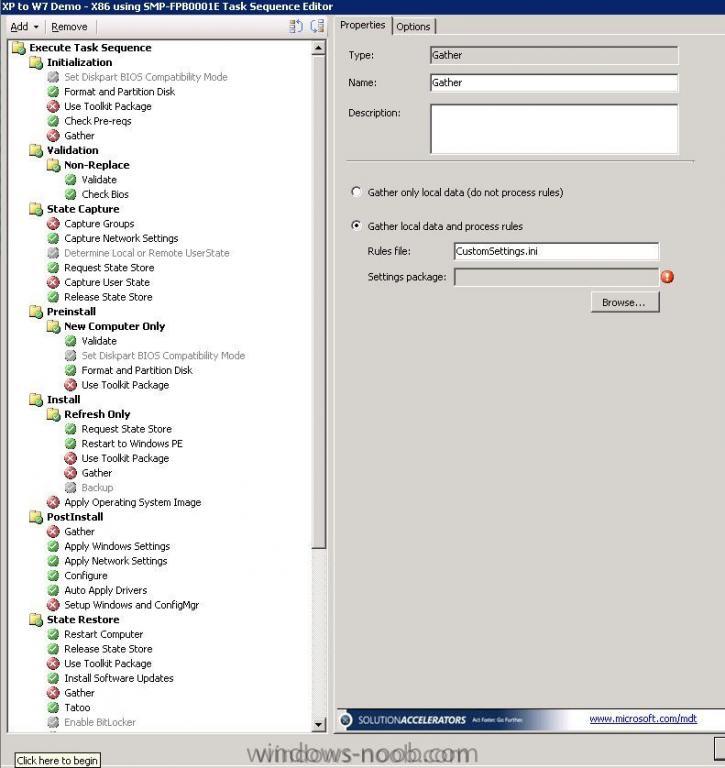
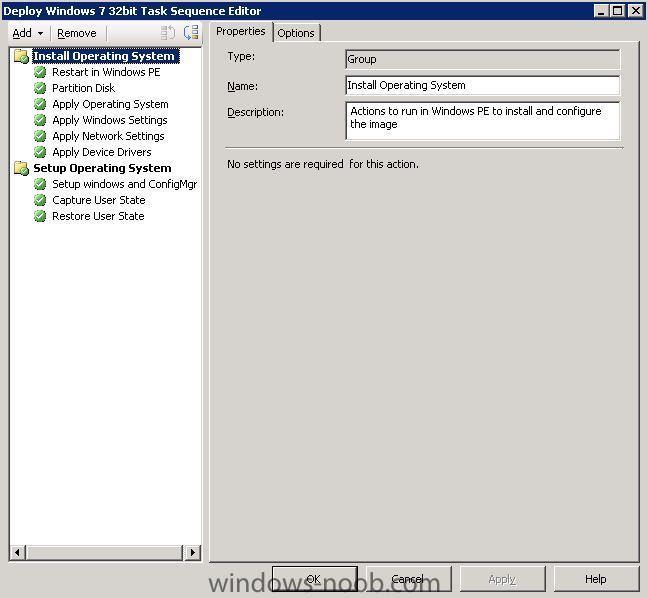
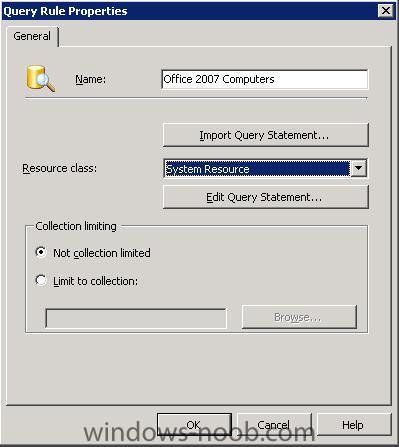
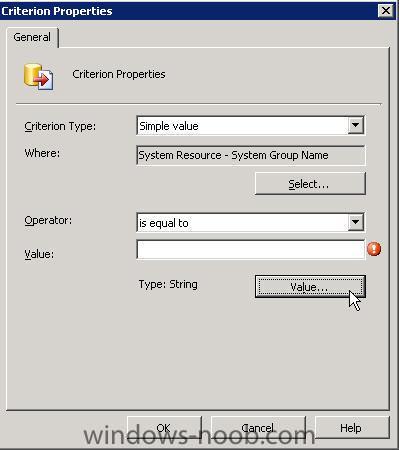
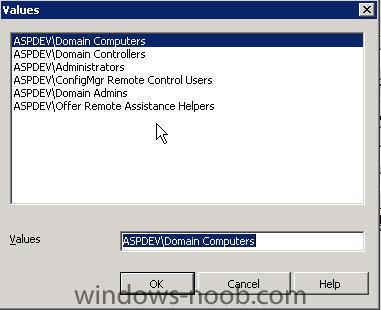
SCOM 2012 R2 Intro
in SCOM 2012
Posted
hmmmm....when I click on that link, I get something else, not the intro you mention.